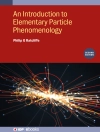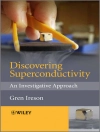This two-volume handbook offers a comprehensive and coordinated presentation of SQUIDs (Superconducting Quantum Interference Devices), including device fundamentals, design, technology, system construction and multiple applications. It is intended to bridge the gap between fundamentals and applications, and will be a valuable textbook reference for graduate students and for professionals engaged in SQUID research and engineering. It will also be of use to specialists in multiple fields of practical SQUID applications, from human brain research and heart diagnostics to airplane and nuclear plant testing to prospecting for oil, minerals and buried ordnance.
While the first volume presents the theory and fabrication of SQUIDs, the second volume is devoted to applications. It starts with an important aspect of the analysis of measured magnetic signals generated by current sources (the inverse problem), and includes several chapters devoted to various areas of application, namely biomagnetism (research on and diagnostics of human brain, heart, liver, etc.), detection of extremely weak signals, for example electromagnetic radiation and Nuclear Magnetic Resonance.
The volume closes with a chapter on motion detectors and the detection of gravity waves.
Inhaltsverzeichnis
SQUID Amplifiers (Clarke, Lee, Muck, Richards)
SQUIDs for Standards (Gallop, Piquemal)
Generic Inverse Problem (Wikswo)
Biomagnetism (Nenonen, Trahms, Vrba)
Magnetic Measurements and Microscopy Using SQUIDs (Wellstood, Black)
Nondestructive Evaluation of Materials and Structures Using SQUIDs (Donaldson, Krause)
Geomagnetic and Ordnance Prospecting (Clem, Foley, Keene)
Gravity and Motion Detection (Paik)
Über den Autor
John Clarke is the world leading authority on SQUIDs and Alex Braginski contributed significantly to the development of high-temperature SQUIDs. They have assembled a team of co-authors who are the pre-eminent specialists in virtually all aspects of SQUIDs and SQUID applications.












